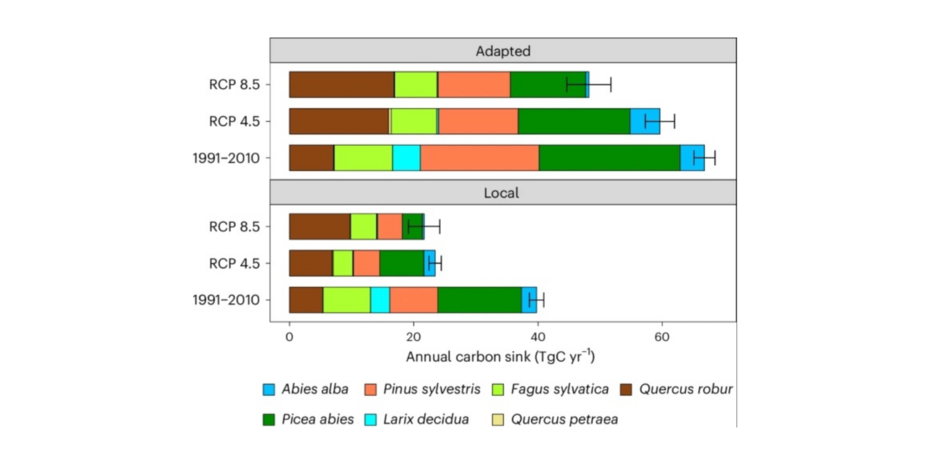Assisted tree migration can preserve the European forest carbon sink under climate change

Assisted tree migration
Assisted migration scenarios were modelled for seven major European tree species. To enhance forest resilience, coniferous trees must be replaced by deciduous species across large portions of their range. Maintaining or even increasing current carbon sinks is only possible if seed provenances adapted to future climate conditions are used.
Climate change threatens the role of European forests as a long-term carbon sink. Assisted migration aims to increase the resilience of forest tree populations to climate change, using species-specific climatic limits and local adaptations through transferring seed provenances. We modelled assisted migration scenarios for seven main European tree species and analysed the effects of species and seed provenance selection, accounting for environmental and genetic variations, on the annual above-ground carbon sink of regrowing juvenile forests. To increase forest resilience, coniferous trees need to be replaced by deciduous species over large parts of their distribution. If local seed provenances are used, this would result in a decrease of the current carbon sink (40 TgC yr−1) by 34–41% by 2061–2080. However, if seed provenances adapted to future climates are used, current sinks could be maintained or even increased to 48–60 TgC yr−1.
- Active Restoration
- Policy Actors

